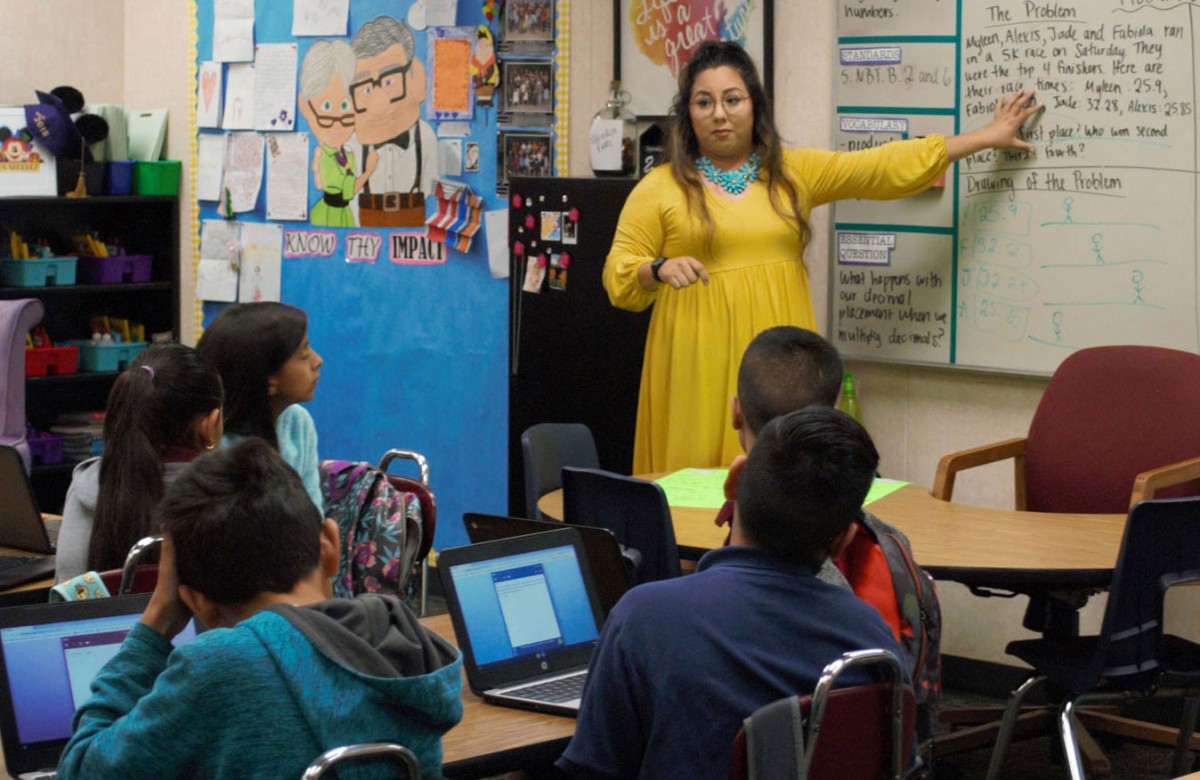Implementing High-Quality Curriculum Requires High-Quality Support
June 9, 2020

By: Dr. Jared Myracle, Chief Academic Officer, Jackson-Madison County School System, Tennessee
Over the past several years I have had the opportunity to see the implementation of high-quality curriculum in a variety of contexts. As both a chief academic officer in a public school system and a district partner at a professional learning organization, I have seen curriculum implementation in many schools and districts and the many shapes and forms it can take. Some schools seem to immediately accelerate student learning not long after their implementation, while others seem to stagnate and struggle to find their footing. The deciding factor generally comes down to how effectively teachers and leaders are supported throughout the process.
If you walk into any school that is being successful at raising student achievement, you will see an emphasis on three things: the content being taught, the skill of the school's teachers, and the engagement level of the students. Together, these three elements are known as the instructional core. Although there is nothing revolutionary about any of the instructional core's components, it is more difficult than it might appear to maintain a steady focus on each of these elements in the day-to-day hustle and bustle of running a school or school district.
Effectively leading the implementation of new, high-quality curriculum while keeping a balanced perspective and focus on the instructional core is certainly a challenge confronted by many leaders. This is where NIET's recent publication, "High-Quality Curriculum Implementation: Connecting What to Teach with How to Teach It" becomes a very useful resource. The paper outlines a very useful framework for thinking through a high-quality curriculum implementation process and the professional learning support necessary. Examples are included from the organization's work with partner districts, all with an emphasis on keeping the instructional core front and center. These examples help to demystify the process and give school leaders a tangible outline to guide the structure of the professional learning that can make the difference between an effective implementation and one that falls short.
The lessons learned shared in this paper speak to elements of a successful implementation that are necessary in any school or school district. Two takeaways stand out as being often potentially overlooked by many who are in the early stages of this process; don't leave leaders behind when providing professional learning on the curriculum, and integrate the curriculum into as many of your coaching cycles, planning routines, and other school structures as deeply as possible.
One thing that I know after several years of leading implementation of high-quality curriculum is that your process will only be successful if the principal and the rest of the school leadership team are central to the plan. Providing effective professional learning for the principal and other building leaders is critical to ensuring they are crystal clear on the expectations of the curriculum, where teachers need support, what students will be doing, and how to balance these elements of the instructional core effectively. This also empowers school leaders to take ownership of the curriculum implementation and truly make it part of their process for improving the school. Once the school leadership starts seeing the curriculum in all parts of their plan, the impact on teachers and students is significant due to the focus that has been provided. No longer chasing multiple complex initiatives, everyone at the school can take a deep breath and lean into the challenging work of implementing a high-quality curriculum in a highly effective manner.
Once the curriculum is placed at the center of the strategy, the teachers and leaders can better see how all elements of the instructional core work together. In a setting where materials implementation has been very effective, the curriculum, the teacher's skill, and the engagement of the students are seen as interdependent and not treated in silos. Classroom visits are not used by leaders purely to observe teachers' strategies and classroom management, it is a measure and support for making sure the curriculum is being implemented well. Teacher planning and collaboration become a vehicle for lesson study within the curriculum and internalizing its expectations. Student engagement is viewed through a lens of how well they are actively taking part in and mastering the content taught within the curriculum. All of these shifts help bring the energies of teachers and leaders in alignment and integrate the presence of the new curriculum within the instructional core so that they are seen as a single focus and not competing initiatives.
Any educator grappling with how to effectively implement high-quality curriculum would be wise to review NIET's "High-Quality Curriculum Implementation: Connecting What to Teach with How to Teach It." Alongside the lessons learned and concrete suggestions are a number of voices from the field that speak to the many nuances and subtleties of this work. The quality of curriculum implementation improves when we learn from each other and apply it to our work, and this resource has the potential to advance the work of many.